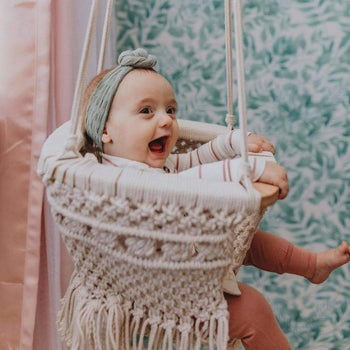how to choose safe toys for your baby

Toys are supposed to be fun, right? It sounds so obvious, but unfortunately toys can also be dangerous, which leads to the opposite of fun. So, the importance of choosing safe, age-appropriate toys is really critical. Whether you are shopping for your own child or someone else’s, this blogs offers some helpful tips and guidelines.
What can make a toy dangerous?
These are a few of the main things that can make a toy especially dangerous for toddlers, and what you want to avoid:
- Sharp components or edges – which can lead to injury
- Tiny parts– which can break off and cause baby to choke
- Loud noises – which can damage baby’s hearing
- Batteries that are easily accessed – which could be swallowed or otherwise expose a child to toxic substances
- Lead – which can be absorbed into baby’s body and cause a variety of serious problems
- Plastics – which can leach toxic chemicals into the body, disrupting hormones and causing other ill effects
What are some helpful toy safety guidelines?
Here is a safety checklist you can use as you are selecting toys for kids:
- Choose toys that match your child’s age and skills Check the age range noted on a toy’s packaging—but also use common sense. A toy with smaller parts may be great for an older child but would present choking risks for a smaller child. This helpful article from Nemours goes into more detail on helping you select Smart Toys for Every Age.
- Pick toys made of natural and non-toxic materials Choose toys that are made of natural fibers such as cotton or wool—preferably organic so as to avoid pesticide residues—or smooth, uncoated wood. These sorts of toys provide a wonderful, healthy, and safe tactile experience for baby. And they can be much more durable than toys made of cheap plastics. (Check out our Finn + Emma natural toys for some ideas.)
- Make sure fabric toys can be washed Toys get dirty; it’s a reality. If you are selecting a fabric plaything, choose one that can easily and safely be thrown in the washing machine for periodic freshening.
- Avoid electronics Babies and toddlers don’t need electronic toys (and the batteries, plastics, tiny parts, etc. that often come with them). The best toys for little ones are simple toys that comfort and/or inspire touch, movement, and curiosity.
What are the best toys for babies and toddlers?
Here are a few suggestions of great toys for babies, to help them learn and grow:
- Mobiles made of soft materials, to hang from baby’s crib
- Wooden teethers or rattle that comfort and entertain baby
- Unbreakable mirrors that let baby explore themselves and the world around them
- Soft toys like stuffed animals made of natural materials, which are big enough so as not to prevent a choking hazard (also check to make sure that eyes, ears, or other parts of the stuffed animal cannot become easily detached)
- Baby play gyms to get baby moving (we wrote more about them, and how they are a great holiday splurge, here.)
And here are a few suggestions of great toys for 1-to-2 year olds, to help further their development and improve motor skills:
- Simple instruments, like a wooden drum or xylophone to help little ones explore sound and music alongside motor skills
- Toy boats for bath time, poolside, beach time, or anytime fun and adventure
- Push-or-pull toys that encourage movement
- Puzzles and games like a set of wooden stacking rings, large wooden blocks, or “pound-a-peg”
- Age-appropriate building sets and shape sorters, preferably made of wood
Toys can be wonderful things that help little ones learn, grow, exercise, explore, and create. It’s simply a matter of matching the right toys to the age and skill requirements of a child. When in doubt, keep things simple and natural and do your best to avoid plastics and any other potentially harmful materials. In the words of Sustainable Jungle, "Fortunately, playtime need not be a risky business." Let the fun begin!

















